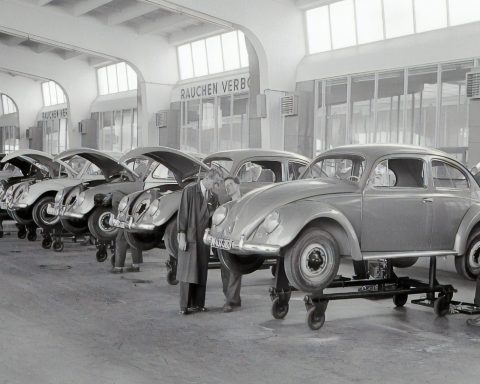
This article was co-authored with Professor Nigel Sparrow OBE, Senior National GP Advisor and Responsible Officer, CQC and Professor Steve Field CBE, Chief Inspector of General Practice, CQC.
Thank you for the BJGP article, “CQC Inspections: unintended consequences of being placed in special measures”.1 The CQC welcomes opening the door to dialogue and discussion about practices being placed in special measures and wholeheartedly agrees with the need to work effectively together in enabling improvement.
Improving care under pressure
With unprecedented pressures in General Practice and across the whole NHS, we are aware of the context. Preparation for a CQC inspection may feel to some GPs as yet another task there is little time or resources for. So why engage with regulation?
At the CQC we are passionate about improving standards of quality and safety in healthcare. Through our work, we are for the first time able to provide a comprehensive description of what good care looks like.2 We support change and improvement by identifying and championing examples of good and outstanding practice, as demonstrated by our Outstanding Practice Toolkit,3 and by celebrating innovative ways of working in an ever resource-squeezed environment.
The intention of special measures
We do not underestimate the difficulties of being rated as inadequate for practice staff and patients. The intention of placing a practice in special measures is to make patients, providers and commissioners aware that we have serious concerns and to identify the need for urgent support. The special measures framework allows the CQC and NHS England to work together to ensure a timely and coordinated response to inadequate practices. It also provides clear timescales for addressing inadequate care, which was identified as missing in the case of Mid Staffordshire NHS Foundation Trust,4 allowing practices to access the support they need to get “back on a path to recovery and then to excellence”.5
The key is effective leadership
We have found that the vast majority (84%) of England’s GP practices are providing a good or outstanding service to their patients, with 12% rated as “requiring improvement”. So why are 4% of practices falling significantly short? As highlighted in the CQC’s recent State of Care report6, the key may be in leadership.
The CQC assesses the leadership and organisational culture of providers, rating them on how “well-led” they are. By well-led, we mean that the leadership, management and governance of the organisation assures the delivery of high-quality person-centred care, supports learning and innovation, and promotes an open and fair culture.
As highlighted in your article, every practice in special measures has been rated inadequate in the “well-led” key question (in addition to being rated as inadequate in one or more of the other key questions – safe, effective, caring or responsive). Perhaps there is no better time to be considering the role of effective leadership in providing high-quality care as well as guiding practices through these difficult times.
“The NHS needs leadership of the highest calibre if it is to respond successfully to financial and service pressures that are unprecedented in its history.”7
The first practice to come out of special measures was only recently announced. The process of regulation has driven impressive levels of improvement in this practice in the six months since its initial inspection: “In contrast to our last inspection, we found a group of
GPs and nurses providing clinical care at the practice who were enthusiastic, motivated and co-operating well with one another“8 and four of the five key questions ratings improved.
The process of turning a struggling practice around no doubt involves significant time and effort. Improvement does not happen overnight, and it does not happen without effective leadership. Investing in leadership has shown time and time again9 to pay off in the ongoing running of a well-led organisation that delivers good care to the population it serves.
Getting the right support at the right time
As mentioned in your article, there can be local awareness of issues long before the CQC inspects. In some cases, practices themselves have not been surprised by the rating. The CQC strongly supports the early identification of problems within a practice and early investment in support, rather than waiting for an inspection itself to raise the profile of the issues. This will involve closer collaborative working with Clinical Commissioning Groups (CCGs), NHS England and other members of the local health economy.
“At a time when there is growing interest in integrated care and partnership working between the NHS, local authorities and third sector organisations, collective leadership in local health systems has never been more important or necessary.”7
Looking to the future
As our health care economy continues to evolve, and new models of care emerge, the CQC is committed to understanding how we can best work together to support and champion change, and improve quality of care. Crucially, as a profession we must not let regulation act as a barrier to innovation.
Whilst there will be a few practices that need little more than hard resources to improve standards, our findings support a strong argument to be investing in leadership within practices. This has been a central theme in supporting Acute Trusts in special measures, and should be for General Practice. In recognition of this, the CQC is working collaboratively with other organisations to improve our assessment of leadership and organisational culture going forward.
We welcome the RCGP’s commitment to leadership development and its Pilot Scheme has clearly been doing essential work. Nevertheless, we must take more collective responsibility in identifying struggling practices early, championing innovation, driving improvement, and providing long-term support.
Deputy Editor note: If you do have any general points that you wish to put to the CQC please leave a comment. In the spirit of the article and the desire to have an open discussion they have promised to respond. However, please keep these to the general rather than raising specific concerns about specific practices.
References
1. Rendel S, Crawley H, Ballard T (2015) CQC inspections: unintended consequences of being placed in special measures, Br J Gen Pract DOI: 10.3399/bjgp15X686809
2. CQC: GP Practices Provider Handbook Appendices. March 2015
3. http://www.cqc.org.uk/content/examples-outstanding-practice-gps (accessed 6/10/15)
4. The Francis Report (Report of the Mid-Staffordshire NHS Foundation Trust public inquiry) and the Government’s response. December 2013
5. Department of Health: Hard Truths. The Journey to Putting Patients First. January 2014.
6. CQC: State of health care and adult social care 2014/14. October 2015.
7. The King’s Fund: Developing Collective Leadership. May 2014
8. http://www.cqc.org.uk/content/gp-practice-exits-special-measures-following-improvements-patients-1 (accessed 6/10/15)
9. The King’s Fund Commission: The Future of Leadership and Management in the NHS. No More Heroes. May 2011






